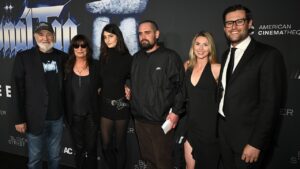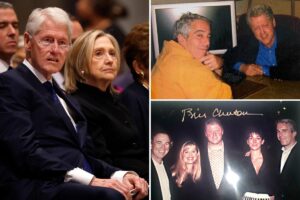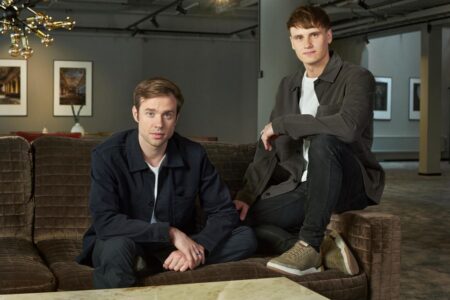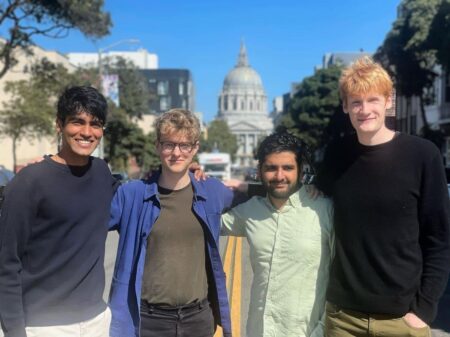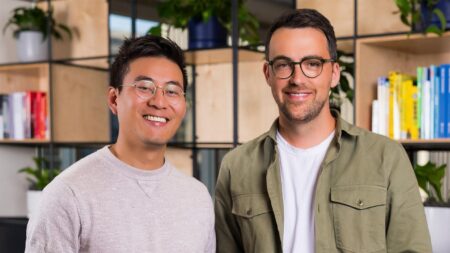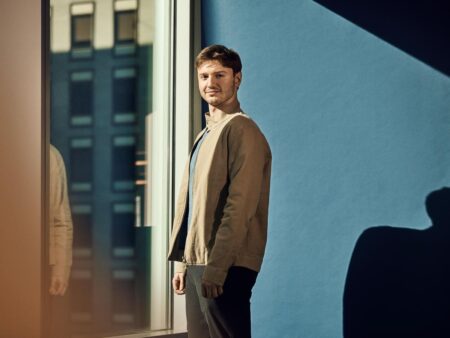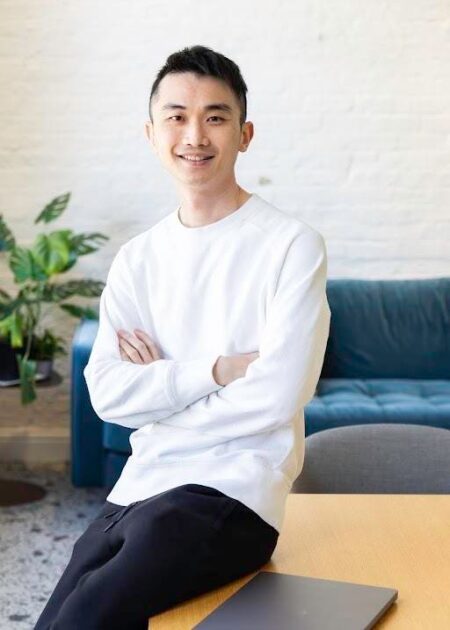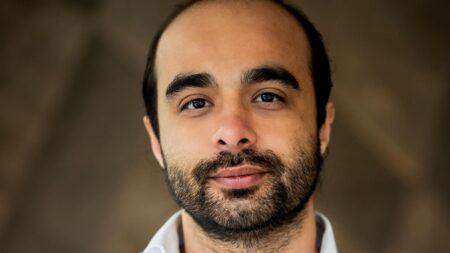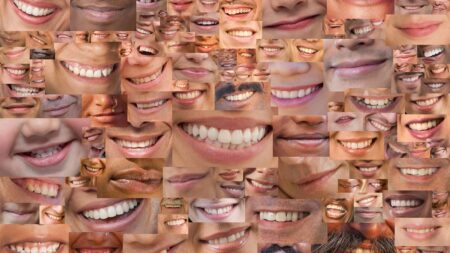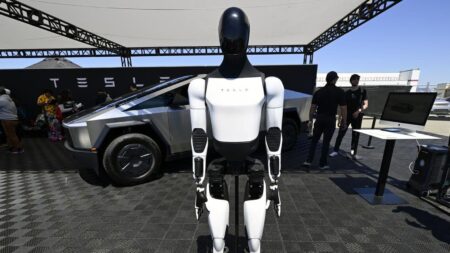After facing backlash from content creators for scraping YouTube data to build its models, the AI behemoth is trying to foster relationships with them.
In 2022, Don Allen Stevenson was livestreaming to his 100,000 followers on Instagram, showing them how OpenAI’s image generation model Dall-E could be used to create vibrant, vivid artwork. Stevenson was surprised when the artificial intelligence company itself jumped in, commenting on the stream and offering all the viewers instant access to its text-to-image tool, he said.
“So within moments, they had thousands of people that requested access to Dall-E 2, and then that became their first artist cohort,” Stevenson told Forbes in an August interview.
Two years later, OpenAI appears to be refining its influencer strategy, carving out a team focused on courting influencers and creators to its platform. It’s currently hiring a “Head of Internet Creators” to develop ties to influencers, according to a new job listing spotted by Forbes. “As our first team member to focus on internet creators, you will architect how OpenAI builds sincere and trusting relationships with creators who are using AI tools in their creative process and businesses,” the listing says.
Earlier this year, the company also hired creator and writing community specialists to act as ambassadors for OpenAI, Quartz reported; one of those individuals is now listed as an “artist manager” for Sora, the company’s text-to-video tool, according to LinkedIn.
But at the same time, the company is facing complaints from creators frustrated by reports that it used transcriptions of YouTube videos to train its models underpinning ChatGPT. According to the New York Times, OpenAI transcribed more than one million hours of YouTube content for GPT-4, a version of its large language model. In August, based on the Times’ reporting, Massachusetts-based creator David Millette filed a lawsuit against the AI company, which has asked for the case to be dismissed. YouTube CEO Neel Mohan has said it would be a “clear violation” of the platform’s rules if OpenAI were to scrape users’ content.
OpenAI did not respond to a comment request for this story.
The company is battling a number of lawsuits from other types of content creators too, including authors and newsrooms, over its use of copyrighted data like e-books. It has broadly argued that the use of publicly available data comes under fair use, and has requested those cases be dismissed as well.
Overall, the AI industry has seen an uptick in accusations of unethical scraping. Companies including Apple, Nvidia, Runway, Anthropic, Stability AI and Perplexity have similarly been scrutinized for using others’ original content, without consent, to finetune their models.
But OpenAI has tried to assuage these concerns. In May, it claimed to be developing a “Media Manager” that will allow content creators to identify the material they own and specify whether they consent to its use for training models.
It’s unclear whether OpenAI’s creators chief will be tasked with repairing these relationships. Part of the role appears to involve finding and showcasing people already using its tools — “ranging from someone who has just discovered ChatGPT to creators with advanced technical chops,” the job listing states — as the AI giant begins to broker partnerships with popular influencers.
OpenAI already collaborates with creatives and influencers from a gamut of fields like film direction, fashion photography and music in an effort to “understand the models’ capabilities and limitations,” it has said.
One of those collaborations is with Nice Aunties, a popular account on Instagram run by a Singaporean architectural designer, who uses tools like Midjourney, Runway ML and most recently OpenAI’s video generation model Sora to create quirky illustrations of women inspired by “auntie culture” in Asian communities. A recent video with about 500,000 views posted on OpenAI’s and Nice Aunties’s accounts shows dozens of miniature aunties coming out of cracked eggs and doing chores like scrubbing, painting toenails and cooking.
OpenAI has also jointly posted content from another creator, Celia Quillian, an Atlanta-based product marketer who runs Instagram and TikTok accounts called Smart Work AI that feature tips for using ChatGPT. Earlier this year, OpenAI began resharing some of Quillian’s videos explaining how to use ChatGPT for meal planning or a game night, she told Forbes. The team reached out and asked if she could add them as a collaborator so they could showcase different ChatGPT use cases and “get more people talking about it.” The conversational chatbot is the focus of most of the videos on her channels, which have over 100,000 followers, she said. “If I were to just say, I’m not going to talk about ChatGPT until they pay me, I would lose all engagement,” she told Forbes.
For the most part, the partnerships seem to be unpaid. The only perk is that artists get free unlimited access to OpenAI’s models, some of which are still unavailable for public use. But some creators aren’t allowed to publicize that: One who received early access to Sora told Forbes they had to sign a non-disclosure agreement that restricted them from sharing anything about the technical details of the model or that they’d received early access. As part of the partnership, they had to agree to give feedback on the model’s limitations. The artist, who produced a video that was jointly posted on their and OpenAI’s Instagram channels, told Forbes that OpenAI’s legal team reviewed the video before they could post it.
OpenAI isn’t the only AI company turning to influencers to promote its models. Stevenson, whose livestream helped a flock of artists get early access to Dall-E, now creates content about other buzzy AI products, including ElevenLabs’ text-to-speech tools and Anthropic’s Claude models. More recently, he spoke to Mark Zuckerberg on stage about Meta’s augmented reality glasses, Orion, which are embedded with AI features.
Quillian says OpenAI wants to “keep a pulse on what people are saying about the tools,” and how they’re using them. Partnering with content creators who have hundreds of thousands of followers is an important part of that strategy — especially to compete with Google and Amazon, which are spending millions of dollars advertising their AI products. To date, OpenAI hasn’t released any commercials.
For some creators, the partnerships aren’t just about testing the bounds of what OpenAI’s products can do. They’re also about influencing them. Stevenson, who gave a Ted Talk at OpenAI in 2022, told Forbes that he suggested the company add a voice mode to make its tools more accessible. “I have chronic nerve pain and nerve damage in my spinal cord, so I have limited use of my left limb. And so I was explaining how I am someone who needs dictation features so they start thinking more like, ‘oh, not everybody wants to type to talk to an AI,’” he told Forbes.
About a year later, and to much controversy, the company gave ChatGPT a voice.
Read the full article here

